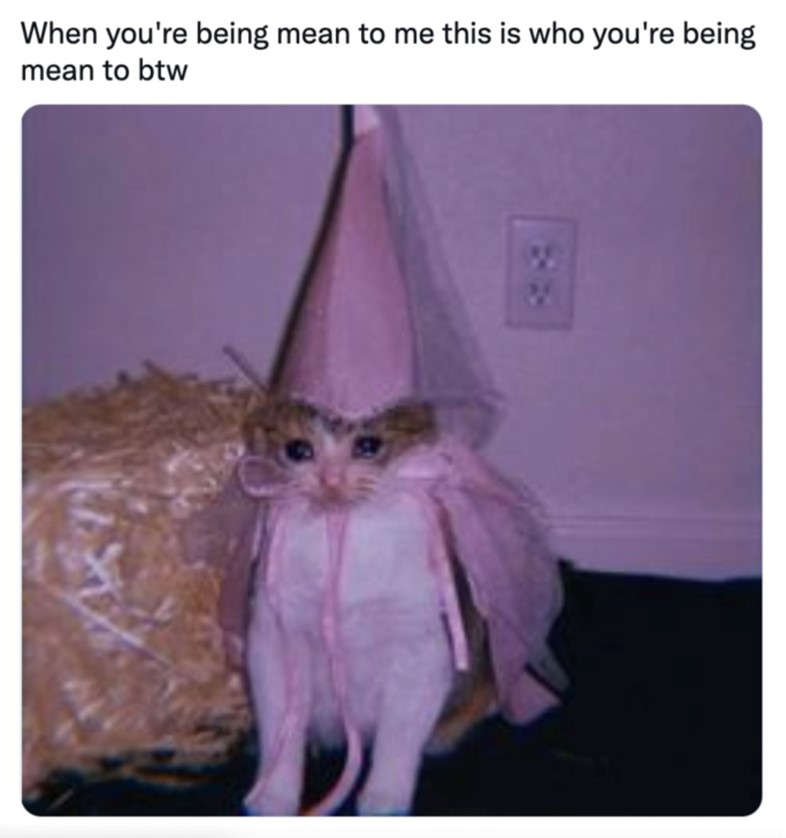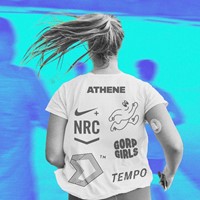From Bambis and bunnies to the viral ‘canthal tilt’ Tiktok filter, predator vs prey discourse is everywhere – here’s how we can use ‘girl theory’ to unpack it
Nobody wants to be a prey animal – right? Docile and vulnerable, her gentleness and lack of bloodthirst is seen as an evolutionary disadvantage, especially when up against the hunter, whose understanding of the world has, ostensibly, been sharpened by his focus on killing and winning. Earlier this year, an AR filter made the rounds on Tiktok purporting to assess “canthal tilt” – bringing to the masses the incel belief that the angle of a person’s eyes revealed inherent predatory or prey-like qualities—and their social fate as a result. Self-styled alpha males discovering that they were, according to the fucked-up criteria of physiognomy, closer to feedstock animals became easy targets for ridicule. “Negative canthal tilt, it’s over for bro,” swarmed the comments, at first in earnest and then as a joke.
At the same time, a girl-coded trend emerged, encouraging participants to record the difference between their “doe eyes” and “siren eyes”. Same dualism, but with some self-reflexivity. A crucial difference: the girlies prized both doe and siren in equal part, because of the knowledge that either play can be useful in the art of persuasion. Try it yourself: Do you look appropriately conniving when you’re going in for the kill? Irresistibly cute when you want to be eaten up?
At first, the twinship of pretty girls with doe-eyed deer may seem like yet another traditional gender norm glinting through a memetic surface. The tottering fragility of a fawn – so Coppola-coded, up there with Virgin Suicides, satin bows, Miu Miu ballet slippers, dog-eared copies of The Bell Jar, and the sickly-sweet scent of just-turned buttercream – becomes a stand-in for the delicacy of girlhood: for perpetual innocence, with all that it denies and licences. “I’m so pretty,” affirm the girls as an entity, from beneath the long lashes of a baby deer photographed head-on. “Me and the girls on our way out,” utters the collective voice from a picture of three fawns in some long grass. “Girls when there’s no ibuprofen,” reads the caption of a viral video, where a tiny fawn tries and fails to stand on trembling legs, so freshly in the world that her coat is still wet with amniotic fluid. “This is me if u even care,” go the comments under a wordless pic, where the deer is dressed in pink legwarmers and AF-1s, a demure little earring and a purse loaded with a Dostoevsky novel. Is that all she is: a pretty, defenceless thing with an iced latte hovering nearby in the void?
In a previous piece about girls, I wrote about something I called “tactical passivity”—that is, adopting a seemingly docile persona to achieve a specific goal—touching on the secret allure of “going prey mode.” Sure, to see yourself as a lamb, a calf, a bunny, or a fawn is to identify with being at the bottom of the food chain. Such an admission of powerlessness is, obviously, why dudes fear it. But, as legions of girls have already expressed, going Prey Mode has its own soft pleasures, not to mention latent advantages. Making peace with how the odds are stacked against you could be totally relaxing. It’s cute and fun to be plush and pretty, relaxed and harmless, munching on sugar cubes and organic carrots. You could also, theoretically, do all of that while subverting a fixed power dynamic.
I’m forever inspired by an essay by the poet Anne Boyer, titled When the Lambs Rise Up Against the Birds of Prey, which takes a fresh POV on the predator-prey relation. Contrary to popular belief, which casts the alpha predator at the top of the food chain and knowledge hierarchy, Boyer argues that it’s the prey animal that understands the world with most depth and accuracy. Think about it: prey have to absorb the lay of the land, the motion of the air, the predator’s shadow, and the flicker of recognition that runs through the rest of the herd so that they can outsmart danger together. That is, the prey animal intuitively gets its world as an interlocking and interdependent system, one that includes its world and its clique—while the predator stays blind to the true nature of reality because of its deadly focus. Under Boyer’s treatment, it’s kind of really communist. In the words of grassfed icon Horsegiirl, talking prey-to-prey relations: “We don’t see a reason to compete.”
@noahglenncarter This filter is supposed to determine if youre attractive #foryou #filter #canthaltilt ♬ Epic Music(863502) - Draganov89
So let’s give the Bambis and babygirls due credit. Just because you don’t mean any harm doesn’t mean you’re just taking it from the world. But as with any tactic, nothing – not a power shift, not a softer life – about Prey Mode is a given. At a summer exhibition in Paris, I came upon some metal leg-hold traps—the type that would maul a creature the more it struggled to get free, shredding muscle into unusable rawness. Nearby were the recognisable tiles of Jenny Holzer’s Inflammatory Essays – construction paper wheat-pasted on gallery walls in kindergarten colours, bearing those incitements of rage and violence that once circulated on the grid and in the streets. I’d seen it all before. But one, turquoise, caught my eye because of its brutal address of grace and violence:
IT’S MOSTLY LOVE THAT MAKES YOU LOOK AT FINE ANKLES AND THEN BREAK THEM. THE ANKLE IS WHERE THE MOVING POWER OF THE LEG TAPERS TO AN EXQUISITE STEM OF BONE. SADLY, THE FOOT COMES NEXT, ANCHORING WONDERFUL CREATURES TO THE DIRT. DEER, WADING BIRDS, AND THE BEST PEOPLE HAVE FINE ANKLES. IT’S GOOD TO CRACK THEIR SUPPORTS SO THEY’LL FALL DOWN IN A LOVELY CURL. THEN YOU’LL CARE FOR THEM SO THEY WILL BE FREE FROM ALL CRASSNESS AND STRUGGLE. YOU’LL WATCH THE SHATTERED ANKLES HEAL AND MEANWHILE, THE CREATURES LIVE IN A STATE OF GRACE AND SUSPENDED ANIMATION.
“Do you look appropriately conniving when you’re going in for the kill? Irresistibly cute when you want to let yourself be eaten up?”
Read whatever you want into it; in the tea-leaf shapes of dirt, deer, and wading birds, I see a parable of control – where “the best people” are most beloved by others when they’re hobbled, unthreatening: turned by force into beautiful, agreeable objects, incapable of bounding away and deprived of flashes of adversarial rage. Like Boyer, Holzer smuggles revolutionary dimensions into works of great aesthetic impact; the same can’t be said of every cute deer meme, nor should it. Going Prey Mode means going as far as accepting your built-in surrender mechanism. By all means, be soft, gentle, devourable, as a trick or for real, just to see what happens next. Could you sense, or experience, the world differently as a result of a herbivorous relationship to your peers, enemies, and environment? It may not always play out in the way that’s anticipated.
For a time, I get obsessed with a video taken at an American football game. A big, caricatured mascot—like a racoon, if a racoon were ninety percent more head than body—ambles up to a cheerleader, who faces its rolling tongue with a smile. All of a sudden, she’s gone. Blonde locks, miniskirt, white go-go boots disappear wholesale into the accommodating mouth. “Whoa!” shouts the commentator. “Engulfed!” I remembered it again, sitting across from someone I liked well enough, watching them mop up the pooling blood of a steak tartare with a bit of bread. I knew what would happen next, and for that reason felt closer to the tartare.
There has been, too, a spate of deranged memes about being so into someone that you’d gladly be eaten whole, stapled to their lungs, melted into their eyeballs, or take up residence in their skin; a grotesque enmeshment, the idea that the deepest intimacy happens at the cellular level and that the greatest act of devotion is, in fact, cannibalism. That, fundamentally, is also a prey relation. What if the deer doesn’t hate the ritual of its death—if it desires the alligator that eats it, and the act of being eaten itself? Later, I searched up the football video once again, so I could send it with the caption: Love is Vore.
Join Dazed Club and be part of our world! You get exclusive access to events, parties, festivals and our editors, as well as a free subscription to Dazed for a year. Join for £5/month today.




